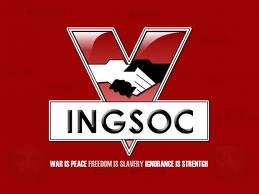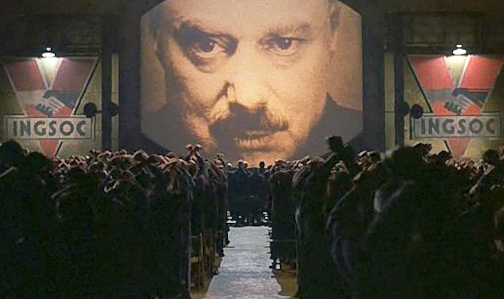It looks like you're using an Ad Blocker.
Please white-list or disable AboveTopSecret.com in your ad-blocking tool.
Thank you.
Some features of ATS will be disabled while you continue to use an ad-blocker.
3
share:
There still seems to be a lot of ignorance in the world as to what exactly is the Federal Reserve. Who runs it and what is its primary
responsibility?
The Federal Reserve Act was passed in 1913 under the Wilson administration. Although the Federal Reserve contains the word "Federal", it is technically not part of the Federal Government.
The Federal Reserve does have stockholders. As a result, the Federal Reserve is, technically, a private investment firm. Any company/coorporation that sells stock must primarily make business and investment decisions in the best interests of its stock holders. The federal Reserve is no exception.
The list of stockholders that hold the stock options for the federal Reserve is private and has never been revealed to the public. As a result, it is not know who holds the stock options of the Federal Reserve.
Congress and the Senate do discuss Federal Reserve issues such as interest rates etc and the Cabinet of any sitting President also is involved. Still, The federal Reserve is NOT technically a part of the Federal Government.
For this reason the Federal Reserve has never been auditted (one of Ron Paul's primary issues with the Fed).....
The Federal Reserve Act was passed in 1913 under the Wilson administration. Although the Federal Reserve contains the word "Federal", it is technically not part of the Federal Government.
The Federal Reserve does have stockholders. As a result, the Federal Reserve is, technically, a private investment firm. Any company/coorporation that sells stock must primarily make business and investment decisions in the best interests of its stock holders. The federal Reserve is no exception.
The list of stockholders that hold the stock options for the federal Reserve is private and has never been revealed to the public. As a result, it is not know who holds the stock options of the Federal Reserve.
Congress and the Senate do discuss Federal Reserve issues such as interest rates etc and the Cabinet of any sitting President also is involved. Still, The federal Reserve is NOT technically a part of the Federal Government.
For this reason the Federal Reserve has never been auditted (one of Ron Paul's primary issues with the Fed).....
Originally posted by Elsha
There still seems to be a lot of ignorance in the world as to what exactly is the Federal Reserve. Who runs it and what is its primary responsibility?
So... since you put this posting in the INTRODUCTIONS area, am I supposed to understand that YOU are the Federal Reserve?
Welcome to ATS.
reply to post by alfa1
Um no, I'm not part of the federal Reserve. I don't post very much and I did not "put" it where it is. Newbies don't have much choice. Point is, people need to know that the Federal Reserve is not a part of the their government. Therein lies the greatest issue we face today monitarily. Nothing will change as long as the federal Reserve remains. It must go..its inception was treason against the American people. The Fed MUST go...John Kennedy kknew this and was prepared to return the monitary control back to the treasury....
I like Ron Paul but the fact is the Federal Reserve cannot be re-formed because it is a private company. It must be destroyed...
Um no, I'm not part of the federal Reserve. I don't post very much and I did not "put" it where it is. Newbies don't have much choice. Point is, people need to know that the Federal Reserve is not a part of the their government. Therein lies the greatest issue we face today monitarily. Nothing will change as long as the federal Reserve remains. It must go..its inception was treason against the American people. The Fed MUST go...John Kennedy kknew this and was prepared to return the monitary control back to the treasury....
I like Ron Paul but the fact is the Federal Reserve cannot be re-formed because it is a private company. It must be destroyed...
reply to post by Elsha
yes and no. Firstly, the introductions thread is to introduce yourself and hopefully get enough posts to be able to make a thread. Secondly, the FED has been discussed here quite a bit so your information has probably been posted, actually, i know it has as I've explained in threads that the FED isn't actually Federal at all.
As well if you have a topic you feel is important and you don't have 20 posts in you can u2u a mod or another user to create the thread on your behalf.
anyways, welcome to the party hope you enjoy the stay!
I don't post very much and I did not "put" it where it is. Newbies don't have much choice.
yes and no. Firstly, the introductions thread is to introduce yourself and hopefully get enough posts to be able to make a thread. Secondly, the FED has been discussed here quite a bit so your information has probably been posted, actually, i know it has as I've explained in threads that the FED isn't actually Federal at all.
As well if you have a topic you feel is important and you don't have 20 posts in you can u2u a mod or another user to create the thread on your behalf.
anyways, welcome to the party hope you enjoy the stay!
reply to post by phishyblankwaters
thanks much...I'm sure information about the Fed has been posted but timing is everything and I think more people than ive seen before are starting to look around and assemble and figure out just what is going on in the U.S. and around the world. Because of that, I think these issues bear repeating and can hopefully be addressed on a wider scale. Most Americans still think the Fed is completely run by the Federal Government and that is simply not the case......
thanks much...I'm sure information about the Fed has been posted but timing is everything and I think more people than ive seen before are starting to look around and assemble and figure out just what is going on in the U.S. and around the world. Because of that, I think these issues bear repeating and can hopefully be addressed on a wider scale. Most Americans still think the Fed is completely run by the Federal Government and that is simply not the case......
What is the Federal Reserve Bank (The Fed) and why do we have it?
by Greg Hobbs November 1, 1999
The FED is a central bank. Central banks are supposed to implement a country’s fiscal policies. They monitor commercial banks to ensure that they maintain sufficient assets, like cash, so as to remain solvent and stable. Central banks also do business, such as currency exchanges and gold transactions, with other central banks. In theory, a central bank should be good for a country, and they might be if it wasn’t for the fact that they are not owned or controlled by the government of the country they are serving. Private central banks, including our FED, operate not in the interest of the public good but for profit.
There have been three central banks in our nation’s history. The first two, while deceptive and fraudulent, pale in comparison to the scope and size of the fraud being perpetrated by our current FED. What they all have in common is an insidious practice known as “fractional banking.”
Fractional banking or fractional lending is the ability to create money from nothing, lend it to the government or someone else and charge interest to boot. The practice evolved before banks existed. Goldsmiths rented out space in their vaults to individuals and merchants for storage of their gold or silver. The goldsmiths gave these “depositors” a certificate that showed the amount of gold stored. These certificates were then used to conduct business.
In time the goldsmiths noticed that the gold in their vaults was rarely withdrawn. Small amounts would move in and out but the large majority never moved. Sensing a profit opportunity, the goldsmiths issued double receipts for the gold, in effect creating money (certificates) from nothing and then lending those certificates (creating debt) to depositors and charging them interest as well.
Since the certificates represented more gold than actually existed, the certificates were “fractionally” backed by gold. Eventually some of these vault operations were transformed into banks and the practice of fractional banking continued.
Keep that fractional banking concept in mind as we examine our first central bank, the First Bank of the United States (BUS). It was created, after bitter dissent in the Congress, in 1791 and chartered for 20 years. A scam not unlike the current FED, the BUS used its control of the currency to defraud the public and establish a legal form of usury.
more at:
www.petitiononline.com...
by Greg Hobbs November 1, 1999
The FED is a central bank. Central banks are supposed to implement a country’s fiscal policies. They monitor commercial banks to ensure that they maintain sufficient assets, like cash, so as to remain solvent and stable. Central banks also do business, such as currency exchanges and gold transactions, with other central banks. In theory, a central bank should be good for a country, and they might be if it wasn’t for the fact that they are not owned or controlled by the government of the country they are serving. Private central banks, including our FED, operate not in the interest of the public good but for profit.
There have been three central banks in our nation’s history. The first two, while deceptive and fraudulent, pale in comparison to the scope and size of the fraud being perpetrated by our current FED. What they all have in common is an insidious practice known as “fractional banking.”
Fractional banking or fractional lending is the ability to create money from nothing, lend it to the government or someone else and charge interest to boot. The practice evolved before banks existed. Goldsmiths rented out space in their vaults to individuals and merchants for storage of their gold or silver. The goldsmiths gave these “depositors” a certificate that showed the amount of gold stored. These certificates were then used to conduct business.
In time the goldsmiths noticed that the gold in their vaults was rarely withdrawn. Small amounts would move in and out but the large majority never moved. Sensing a profit opportunity, the goldsmiths issued double receipts for the gold, in effect creating money (certificates) from nothing and then lending those certificates (creating debt) to depositors and charging them interest as well.
Since the certificates represented more gold than actually existed, the certificates were “fractionally” backed by gold. Eventually some of these vault operations were transformed into banks and the practice of fractional banking continued.
Keep that fractional banking concept in mind as we examine our first central bank, the First Bank of the United States (BUS). It was created, after bitter dissent in the Congress, in 1791 and chartered for 20 years. A scam not unlike the current FED, the BUS used its control of the currency to defraud the public and establish a legal form of usury.
more at:
www.petitiononline.com...
edit on 19-10-2011 by jibajaba because: (no reason given)
Originally posted by Elsha
... what exactly is the Federal Reserve.
INGSOC

Who runs it ...
Big brother and members of the inner party

... and what is its primary responsibility?
International warfare and total planetary domination of course
Keeping Oceania safe from the masses of murduring hordes that reside in Eurasia
Over there so your safe over here

Why do ask these questions citizen?
edit on 19-10-2011 by InformationAccount because: (no reason given)
I am currently at an occupy protest and an elderly american man who has dual citizenship came up and gave me this book he wrote. He does not live in
the U.S. A lot of good information in this. Please pass and post it.
www....(nolink)/?6h88u3u8kdekxmy
www....(nolink)/?6h88u3u8kdekxmy
edit on 28-10-2011 by sleuth1 because: error
new topics
-
NIH Chief Confesses COVID Initiatives Were "Completely Made Up " OMG Investigates
Health & Wellness: 23 minutes ago -
Awesome Dip Recipe
Food and Cooking: 3 hours ago -
Vladimir Putin's speech at the meeting of the CSTO Collective Security Council
World War Three: 3 hours ago -
Traveling the world with no passport
Social Issues and Civil Unrest: 8 hours ago -
Happy Thanksgiving to ATS
General Chit Chat: 11 hours ago
top topics
-
Happy Thanksgiving to ATS
General Chit Chat: 11 hours ago, 9 flags -
Traveling the world with no passport
Social Issues and Civil Unrest: 8 hours ago, 6 flags -
Vladimir Putin's speech at the meeting of the CSTO Collective Security Council
World War Three: 3 hours ago, 5 flags -
NIH Chief Confesses COVID Initiatives Were "Completely Made Up " OMG Investigates
Health & Wellness: 23 minutes ago, 5 flags -
Awesome Dip Recipe
Food and Cooking: 3 hours ago, 4 flags
active topics
-
V.P. Kamala Harris releases a video and nobody understands why
US Political Madness • 79 • : Astrocometus -
Vladimir Putin's speech at the meeting of the CSTO Collective Security Council
World War Three • 15 • : RussianTroll -
Awesome Dip Recipe
Food and Cooking • 2 • : JJproductions -
Post A Funny (T&C Friendly) Pic Part IV: The LOL awakens!
General Chit Chat • 7843 • : underpass61 -
Trump could make a peaceful American Revolution
US Political Madness • 10 • : Willzilla7476 -
Simple Thanksgiving
Food and Cooking • 32 • : baddmove -
NIH Chief Confesses COVID Initiatives Were "Completely Made Up " OMG Investigates
Health & Wellness • 0 • : underpass61 -
Happy Thanksgiving to ATS
General Chit Chat • 10 • : baddmove -
Trump Presidential Transition Team will not use GSA or Government entities to come to DC
US Political Madness • 18 • : StoutBroux -
I thought Trump was the existential threat?
World War Three • 117 • : Xtrozero
3
